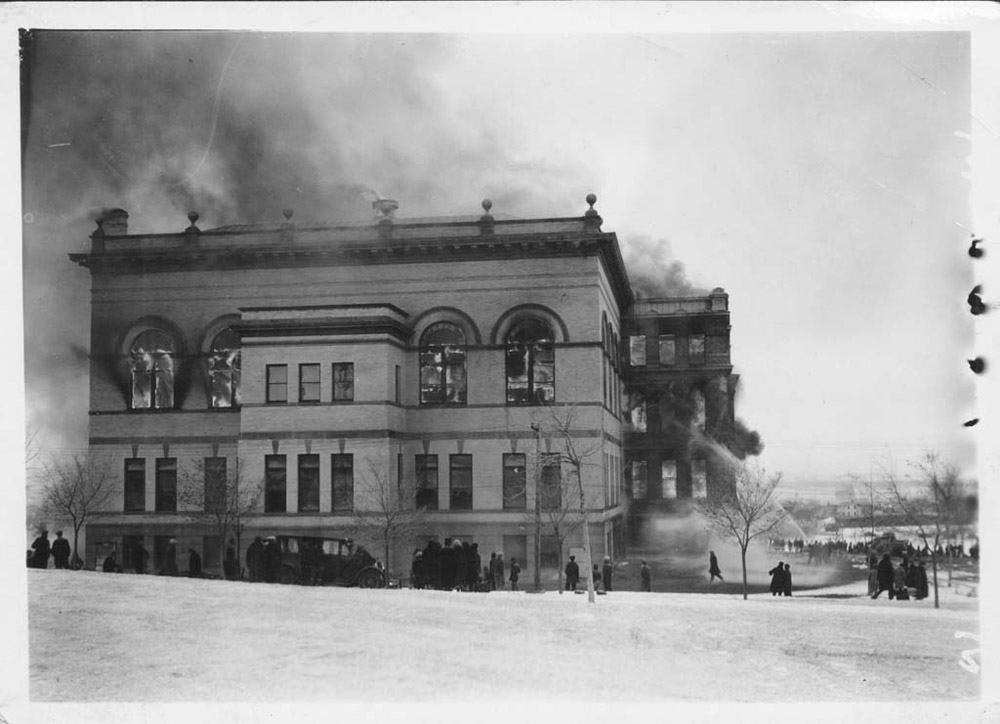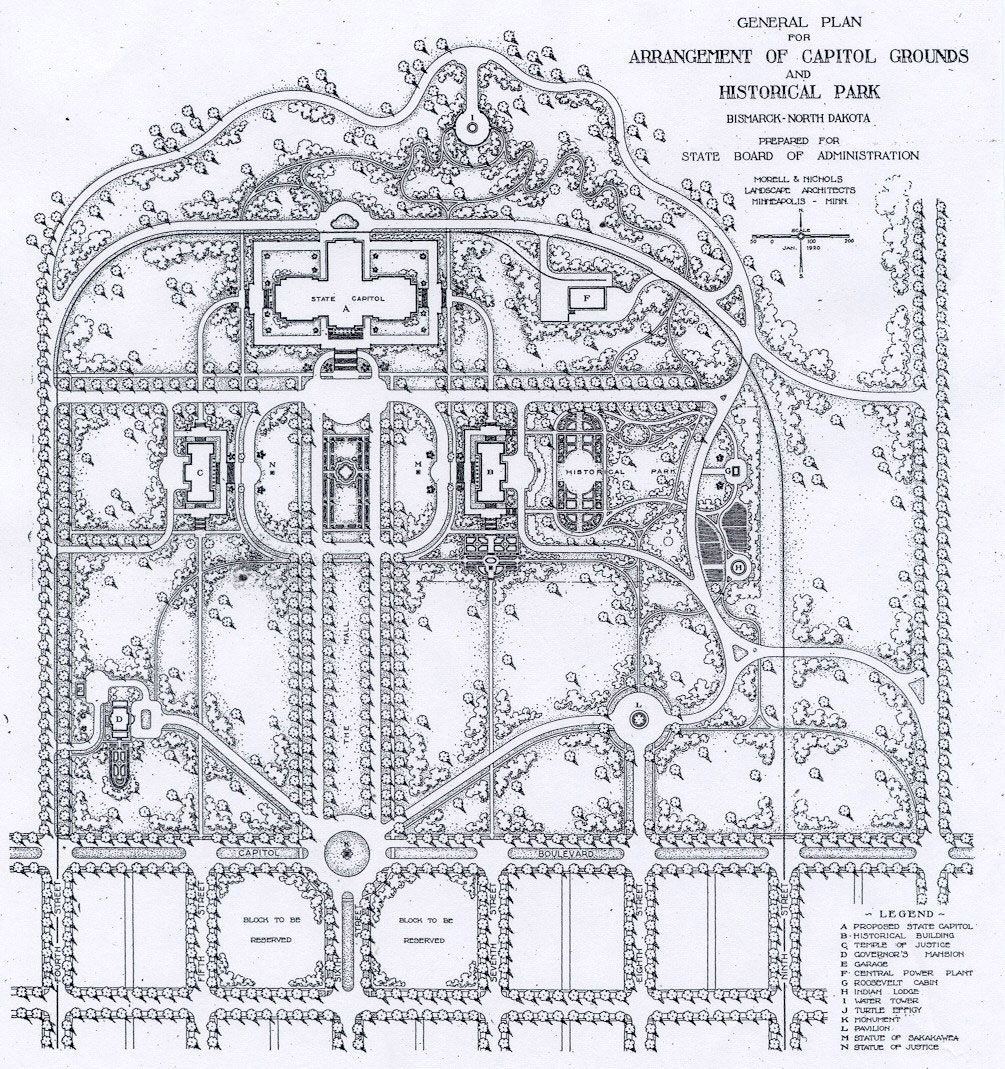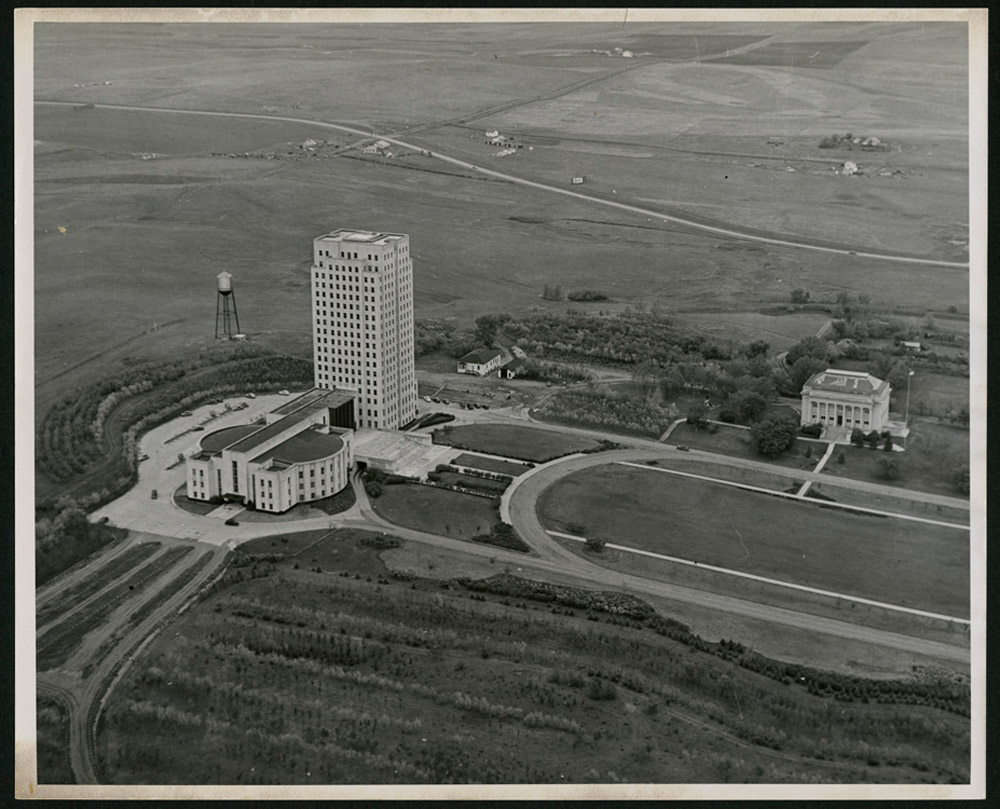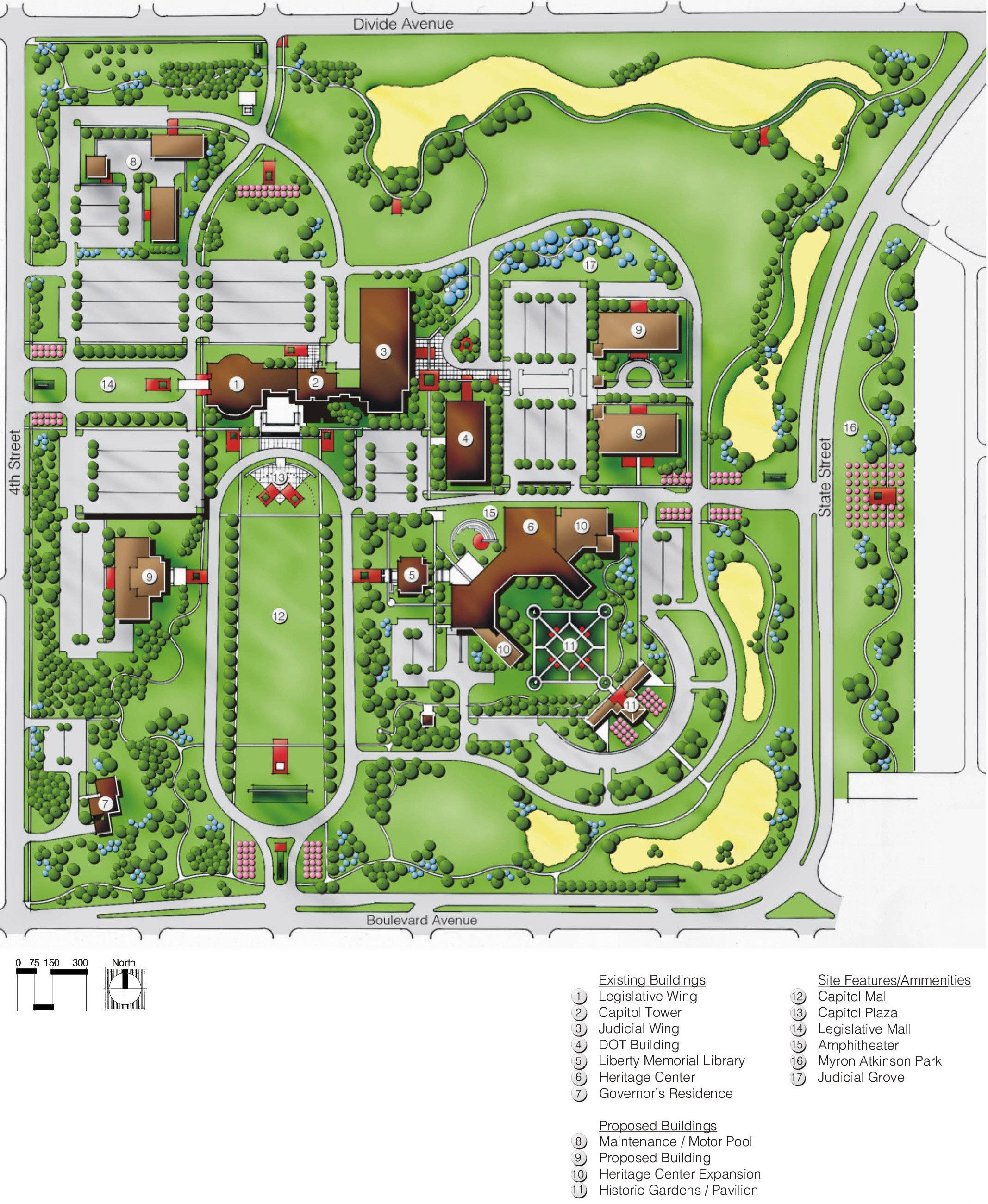As daylight broke on Sunday, December 28, 1930, the Capitol’s night watchman heard loud, cracking noises from the upper floors of the 50-year-old brick building. He searched the building and discovered fire had broken out. He called the fire company headquarters in downtown Bismarck, and the alarm went out.

People came from all over town to see the fire. Citizens pushed the fire trucks up the icy hill and helped to get important papers (including the original state constitution) out of the building. (See Image 4.) But the fire was hot and had advanced too far for the fire fighters to stop the flames. The building was a total loss. Some important papers were lost, too, because the flames were so hot that papers crumpled inside the safes where they were stored.
The legislature was due to convene in a few days. Government offices needed to be open for business, but the seat of government was a pile of broken brick and ashes. Very quickly, alternative sites were arranged for the legislature. Vacant office suites in Bismarck became temporary state offices.

While the fire caused significant losses (including land transaction documents and some tax papers), the fire also gave the state an opportunity to build a new, modern Capitol that would have plenty of space for government offices to grow with the state’s needs. Legislators and government officials had been talking about the need for a new Capitol and had commissioned a Master Plan in 1920. (See Image 5.) However, legislators had not developed a plan to finance the new building. North Dakota had faced economic troubles for several years. The stock market crash in 1929 hurt the economy even more.

After the fire, there was no choice but to build a new Capitol. The 1931 legislature appropriated (set aside) $2 million for the building. This was considerably less than the recent new Capitol constructions in Louisiana ($4 million) and Nebraska ($10 million). To a small extent, the cost of construction was kept under budget because Depression era jobs programs helped pay part of the labor costs. Works Progress Administration (WPA) workers were employed in construction of the Capitol. Part of their wages were paid by the federal government.

Most state Capitols had been built to show off the prosperity of the state. Typical U.S. state Capitols have gold domes, huge rotundas, wide hallways, and open interior spaces that reflect the power of government. North Dakota took a different tone in the design of its Capitol. The style was simple, sleek, and modern. (See Image 6.) The architectural design reminds us that the Capitol is about the business of the people’s government. It is not fancy; it is elegant and efficient. (See Image 7.)
The final cost of the new building was $1,984,488, about $15,000 under budget. The CapitolThe Capitol houses offices of the Tax Commissioner, the Agricultural Commissioner, the Attorney General, the Treasurer, the Secretary of State, and many others. The Capitol was enlarged in 1981 when the new judicial wing opened. The judicial wing, on the east side of the Capitol, houses the state Supreme Court and Law Library as well as other offices. was completed in 1934 with two chambers for the legislature and a 21-story office building for the governor’s office, the state Supreme Court, and other state offices. About 80 per cent of the building is occupied, an efficient arrangement of space seldom found in other state Capitols.
The building was completed at a time when state and county governments were expanding rapidly. Federal programs under President Franklin Roosevelt’s New Deal were designed to help people survive the Great Depression and to bring about economic recovery. These programs created a need for more offices and employees.One way to view the early history of the new Capitol is to consider the story of Minnie Craig, who was known simply as “Min” around the state. Mrs. Craig was elected to the North Dakota House of Representatives in 1922 as a Republican with ties to the Nonpartisan League. In 1933, during her sixth term in the legislature, the representatives elected her to be Speaker of the House. No woman in the United States had ever been elected Speaker of the House in any state legislature before. Although she was a very capable legislator, Mrs. Craig’s term as Speaker was troubled because the legislature was still meeting in alternative locations in downtown Bismarck. In addition, the state was reeling from the effects of the Great Depression and drought. After the session ended, Mrs. Craig took a job as a field worker for the federal relief agency that distributed money, food, and clothing to the poor. Minnie Craig participated in both the legislative process that approved the new Capitol and the expansion of state and federal government. Many of these programs were managed by state committees or agencies. When the Depression ended around 1940, some New Deal programs ended, but World War II (1941-1945) brought about a new bureaucracy to occupy the building.
Why is this important? Modern North Dakota government needed a new home, and the new Capitol provided that place. Architecture is an expressive art; it reveals ideas and feelings. Through its architecture, the North Dakota Capitol tells all residents and visitors that this is a place where the people value simplicity and orderliness in all things, including government.


